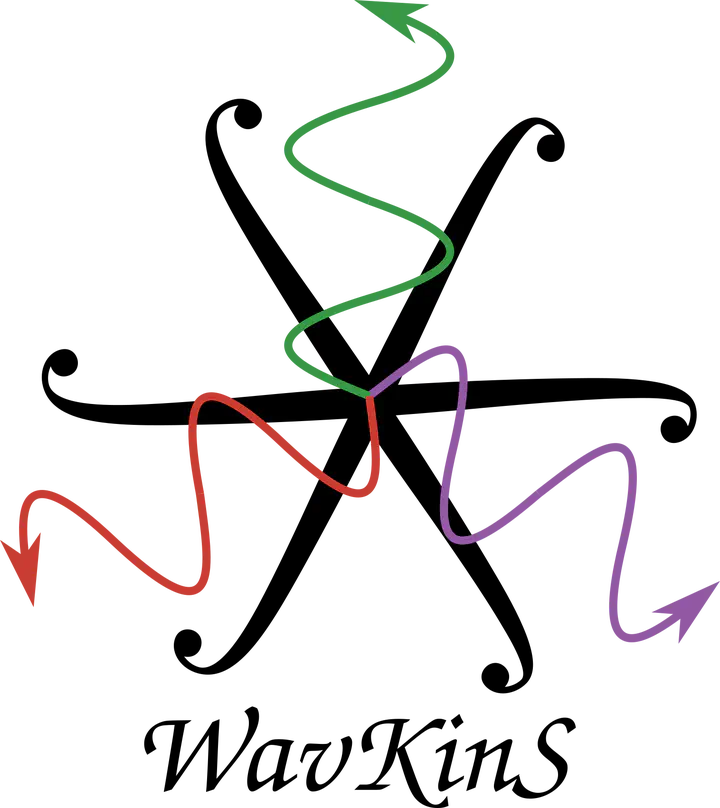WavKinS : a friendly and complete solver for wave-kinetic equations.

The kinetic description of weakly interacting nonlinear waves
Very often in nature, we observe and experience the dynamics of waves. The most common example is acoustic waves, which are responsible for the sounds we hear. Waves can also be observed on the surface and the interior of oceans, elastic plates, tornados, and quantum fluids, among many other systems. In such systems, the physics is not necessarily linear, and waves can interact carrying energy along scales. Such processes are very important, for instance, to understand the small-scale mixing in oceans and the formations of jets in atmospheres.
When the amplitude of the waves is small, we can derive an asymptotic theory able to predict the statistics of the wave amplitude at a given scale. This framework is called the Weak Wave Turbulence theory and furnishes a kinetic equation for the wave-action spectrum $n_{\bf k}$. See e.g. Nazarenko, Springer, Volume 825 of Lecture Notes in Physics (2011) for an introduction on the topic.
In very general terms, the wave kinetic equation can be written as
$$\frac{\mathrm{d}n_{\bf k}}{\mathrm{d}t}=St_{\bf k} + f_{\bf k} - d_{\bf k} n_{\bf k}$$
where $n_{\bf k}$ is the wave-action spectrum, $St_{\bf k}$ is the collisional integral, $f_{\bf k}$ is the forcing, and $d_{\bf k} n_{\bf k}$ is a dissipation term. Their definitions depend on the physical problem. The wave kinetic equation can describe the evolution of the wave-action spectrum from initial data, the approach to equilibrium, and far-from-equilibrium steady states. It is also a powerful tool that allows for many theoretical predictions.
General description of WavKinS
The Wave Kinetic Solver (WavKinS) provides all the structures and functions to solve several types of wave kinetic equations. The code is written in Julia and runs well on personal computers and shared-memory clusters. WavKinS is conceived so that implementing a new physical system should be straightforward, provided that some basic mathematical knowledge of the physical system has been previously achieved (e.g., resonant manifolds, study of possible singularities, etc.).
The following systems are already implemented:
-
Isotropic two- and three-dimensional acoustic wave turbulence.
-
Isotropic three-dimensional Bogoliubov wave turbulence.
-
One-dimensional Majda-McLaughlin-Tabak (MMT) model with $\alpha=1/2$.
-
Petviashvilli wave turbulence.
-
Internal waves in the hydrostatic limit
WavKinS is still under development. You can download the last version HERE.
Documentation is available HERE.